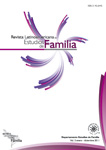Authors
Abstract
Abstract: The aim of this paper is to present some of the immigration policy reforms that have been proposed in the state of Arizona and understand the immigrants’ perceptions through their testimony. The Mexican Household Survey in Phoenix, 2007 is used to describe the Mexican families’ structure and immigration status. An opinion survey conducted with Mexican family members is used to show their perception about anti-immigrant atmosphere that exists specifically in Phoenix.
Families are afraid to be separated because some family members are unauthorized; others stated the abuses of employers in labor relations in addition to the arrests at the discretion of sheriff Arpaio. The recent literature, reports of human rights organizations, and our results show that there is a transformation within immigrant families; the immigration policies are creating a family social stratification based on immigration status and increased vulnerability due to xenophobia and racist environment experienced by Mexican immigrant families.
References
Arizona State Legislature, Fiftieth Legislature. 2011. First Regular Session, SB1611, http://www.azleg. gov (Recuperado el 10 de marzo de 2011).
Capps, Randy, Rosa María Castañeda, Ajay Chaudry y Robert Santos. 2007. Paying the Price: The Impact of Immigration Raids on America’s Children. Washington: National Council of La Raza.
Chávez, Leo R. 1992. Shadowed Lives: Undocumented Immigrants in American Society. New York: Harcout Brace Jovanovish College Publishers, Ca.
Espinosa, Víctor M. 1998. El dilema del retorno. Migración, género y pertenencia, en un contexto transnacional. México: El Colegio de Jalisco, El Colegio de Michoacán.
Fix, Michael y Wendy Zimmermann. 2001. All Under one roof: Mixed-Status Families in an era of Reforma. International Migration Review 35, No. 2: 397-419.
Gammage, Sarah. 2000. Women Immigrants in the U.S. Labor Market: Second-Rate Jobs in the First World. In Women Immigrants in the United States. Migration Policy Institute, Woodrow Wilson International Center for Scholars.
García y Griego, Manuel y Mónica Verea Campos. 1995. La crisis económica y fiscal de California y la nueva ofensiva verbal en contra de los indocumentados. En California, problemas económicos, políticos y sociales, coord. Rosa Cusminiski Mogilner, 125-152. México: UNAM, CISAN.
Harnett, Helen M. 2008. State and Local Anti-Immigrant Initiatives: Can They Withstand Legal Scrutiny? Widener Law Journal 17: 365-382.
Herrera Lima, Fernando. 1977. Las familias transnacionales. Una institución relevante en los procesos de transmigración. En Migración Laboral Internacional, coords. Saúl Macías Gamboa y Fernando Herrera Lima, 227-261. México: Universidad Autónoma de Puebla.
Hondagneu-Sotelo, Pierrete. 2001. Trabajando sin papeles en Estados Unidos: hacia la integración de la calidad migratoria en relación a consideraciones de raza, clase y género. En Mujeres en las fronteras: Trabajo, salud y migración. (Belice, Guatemala, Estados Unidos y México), coord. Esperanza Tuñón Pablos,
205-231. México: ELCOLEF; ECOSUR, COLSON y Plaza y Valdez editores.
Human Rights Watch. 2009. Forced Apart Families Separated and Immigrants Harmed. United States Deportation Policy 19, No. 3, http://www.hrw.org/sites/default/files/reports/us0707_web.pdf (Recuperado el 11 de octubre de 2010).
Ibarra Escobar, Guillermo Eduardo y Valente Soto Cortés. 2012. Crecimiento metropolitano y el centro de Phoenix. En Nuevos Senderos Mismo Destino, Proceso Migratorio e Inserción Económica de Mexicanos en Phoenix, Arizona, coords. Valenzuela Camacho, Blas y Erika Cecilia Montoya Zavala. México: Jorales Editores.
Immigration Policy Center. 2012. Pew Analysis Highlights Immigrant Integration and Economic Contributions, http://www.immigrationpolicy.org/sites/default/files/docs/pew_analysis_on_immigrant_integration_030212.pdf (Recuperado el 7 de marzo de 2012).
Massey, Douglas y Jorge Durand. 2003. Clandestinos migración México-Estados Unidos en los albores del siglo XXI. Colección América Latina y el Nuevo Orden Mundial. México: Miguel Ángel Porrúa, Universidad Autónoma de Zacatecas.
Montoya Zavala, Erika Cecilia y Ofelia Woo Morales. 2011. Participación laboral y autoempleo de las mujeres mexicanas en Phoenix, Arizona. El caso de las estilistas. En Migración Internacional y Mercados de Trabajo. En los Albores del Siglo XXI, coord. Ana María Aragonés, 195-232. México: UNAM.
Muse-Orlinoff, Leah. 2012. Staying Put but Still in the Shadows Undocumented Immigrants Remain in the Country Despite Strict Laws. Center for American Progress, http://www.americanprogress.org (Recuperado el 6 de marzo de 2012).
Navarro Ruvalcaba, Mario Alberto. 2009. Los migrantes mexicanos y el régimen de bienestar social norteamericano. Tesis de Doctorado en Ciencias Sociales, Universidad de Guadalajara, Guadalajara, Jalisco, México.
Ochoa O’Leary, Anna. 2009. Arizona’s Legislative-Imposed Injunctions: Implications for Immigrant Civic and Political Participation. Series on Latino Migrant Civic and Political Participation. Washington: Wilson Center.
Ochoa O’Leary, Anna y Andrea J. Romero. 2011. Chicana/o Students Respond to Arizona’s AntiEthnic Studies Bill, SB1108. Aztlan: A Journal of Chicano Studies 1, No. 36: 9-36.
Ochoa O’Leary, Anna y Azucuna Sánchez. 2011. Anti-Immigrant Arizona: Ripple Effects and Mixed Immigration Status Households under “Policies of Attrition” Considered. Journal of Borderlands Studies 1, No. 26: 115-133.
Oliveira, Orlandina de y Vania Salles. 1998. Introducción: Acerca del estudio de los grupos domésticos:un enfoque sociodemográfico. En Grupos domésticos y reproducción cotidiana, comps. Orlandina de Oliveira, Marielle Pepin Lehalleur y Vania Salles. México: El Colegio de México y Porrúa.
Passel, Jeffrey S. y Paul Taylor. 2009. A Portrait of Unauthorized Immigrants in the United States. Pew Hispanic Center.
________. 2010. Unauthorized Immigrants and Their U.S.-Born Children. Pew Hispanic Center.
Pew Hispanic Center. 2010. Hispanics and Arizona’s New Immigration Law, http://pewhispanic.org/files/factsheets/68.pdf (Recuperado el 11 de octubre de 2010).
Romero, Mary. 2008. The Inclusion of Citizenship Status in Intersectionality: What Immigration Raids Tells us About Mixed-Status Families, The State and Assimilation. International Journal of Sociology of Family 34, No. 2: 131-152.
Rubio Goldsmith, Pat, María Romero, Raquel Rubio-Goldsmith, Manuel Escobedo y Laura Khoury.
2009. Ethno-racial Profiling and State Violence in a Southwest Barrio. Aztlán: A Journal of Chicano Studies 1, No. 34: 93-124.
Salles, Vania. 1992. Las familias, las culturas y las identidades. En Decadencia y auge de las identidades, comp.José Manuel Valenzuela. México: El Colegio de la Frontera Norte.
Silverleib, Alan. 2011. Obama’s deportation record: inside the numbers, http://articles.cnn.com/2011-10-19/politics/politics_deportation-record_1_ice-director-john-morton-undocumented-immigrantscriminal-alien-program?_s=PM:POLITICS (Recuperado el 19 octubre de 2011).
The Americas Society y The Council of the Americas. 2011. The Economic Impact of Immigrat-Related Local Ordinances, http://www.as-coa.org (Recuperado el 24 de marzo de 2012).
Timothy, Edgar. 2003. Legislative Solutions to Challenges Faced by Women Immigrants and Refugees.
En Women Immigrant in the United States, eds. Philippa Strum y Danielle Tarantolo, 171-180. Woodrow Wilson International Center for Scolars, http://www.wilsoncenter.org (Recuperado el 24 marzo de 2011).
THUNDERBIRD, SRE, Wells Fargo, 2003, Economic Impact of the Mexico-Arizona Relationship, www.portal.sre.gob.mx/phoenix/US Census Bureau. 2010. Demographic and Housing Estimates, http://www.census.gov (Recuperado el 16 de enero de 2011).
Valenzuela Camacho, Blas y Erika Cecilia Montoya Zavala, coords., Nuevos Senderos Mismo Destino, Proceso Migratorio e Inserción Económica de Mexicanos en Phoenix. Arizona, México: Jorales Editores,2011.
Vaughan, Jessica. 2006. Attrition through Enforcement: A Cost-Effective Strategy to Shrink the Illegal Population. Washington, D.C.: Center for Immigration Studies, http://www.cis.org/EnforcementIllegalPopulation (Recuperado el 6 de marzo de 2012).
Wells, Kristin. 2003. Making Immigration Law and Policy in the House of Representatives. En Women Immigrant in the United States, eds. Philippa Strum y Danielle Tarantolo. Woodrow Wilson International Center for Scolars, http://www.wilsoncenter.org (Recuperado el 15 de marzo de 2012).

 PDF (Español)
PDF (Español)
 FLIP
FLIP




















